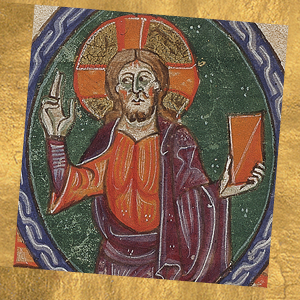St. Josaphat Kuncewicz, Bishop and Martyr

Born in a time of disunity
John Kuntsevych’s (1580-1623) early life echoed the larger controversies that agitated the Church of his land, and indeed, the Church as a whole ever since the Great Schism separated Orthodox and Catholic Christians in the year 1054. Attempts at union between the Eastern and Western Churches had been tried and failed. By the time John was born in western Ukraine to Orthodox parents, many Orthodox Christians harbored great animosity toward the Church of Rome. In 1596, however, a small glimmer of hope arose for those praying and laboring for the unity of the Body of Christ: John’s Ruthenian Church accepted reunification with the Holy See, while maintaining its Byzantine liturgy and traditions [Ruthenian is used here in its ancient sense, to denote the peoples of the Ukraine and Belorussia].
John’s family was fairly well-to-do and the youth was apprenticed to a merchant. He could have married and led a comfortable life. But like the merchant of the parable, this merchant-in-training found the pearl of great price, the treasure for which it was worth giving up everything. He entered a Basilian monastery in 1604, taking the religious name Josaphat. With that name came a calling: this young monk would live, labor, and finally die for the unity of the Churches.
A shepherd for unity
Word quickly spread that the monk Josaphat was a holy man and an ascetic. People began to seek him out for spiritual advice. The Church noticed his abilities. In 1609, Josaphat was ordained a priest, and began preaching and hearing confessions not just in the monastery, but everywhere. Shortly afterward, in 1617, Josaphat was ordained a bishop. In 1618, he became archeparch (the Byzantine equivalent of archbishop) of Polotsk.
The boy John had been born into a time of disunity; the bishop Josaphat would be a shepherd for unity, striving to win over the hearts of his Orthodox countrymen who still resented the “Uniates” for having reconciled with the Catholic Church. He strove no less tirelessly to safeguard the Byzantine liturgy and traditions of his people, for union with Rome by no means meant the suppression of the beautiful, living traditions of the Eastern Churches, including his own. The unity he had in his mind and heart was a polyphony, a harmony of many liturgical rites and languages joined in the praise of the Triune God.
“I would be happy to give my life”
Not everyone saw the beauty of this vision, however. Malicious talk abounded about the archeparch. Simply by reason of his defense of the union with Rome, he became the object of passionate controversy. Since he was responsible for his clergy, he had to discipline some of them who were publically advancing “Disuniate” positions, criticizing the union with Rome.
In 1620, a rival Orthodox archeparch was consecrated in Polotsk, and rumors began to circulate that Josaphat, who cherished Byzantine traditions, was preparing to abolish those traditions and replace them with Latin ones. Josaphat saw where all this was leading. “You people … want to put me to death,” he told them. “I am here among you as a shepherd, and you should know that I would be happy to give my life for you. I am ready to die for the union of the Church under St. Peter and his successor, the Pope.”
That happened in the fall of 1623, when a confrontation with an Orthodox priest resulted in a mob assembling at the bishop’s residence. Witnesses reported that Josaphat was dragged naked through the streets, shot, then beheaded. The violent death of this bishop who had lived and struggled for the unity of the Churches horrified many, even among those who had listened to his slanderers. Their hearts began to open toward unity. And the death of this martyr for unity bore a fruit that was not only hidden among the hearts of the people: his rival, the Orthodox archbishop, was eventually reconciled with the Catholic Church. Even his canonization unified East and West: in 1867, Josaphat became the first saint of the Eastern Churches to be canonized in Rome.







